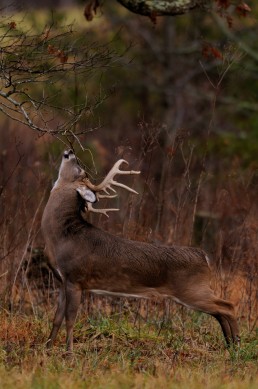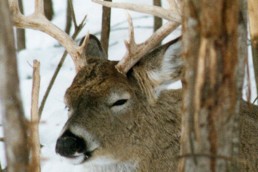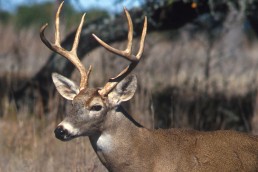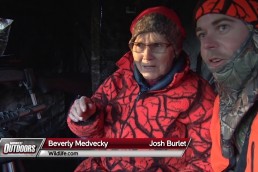Red Hot Oaks
SHARE THIS POST
“Set up between the food source and bedding area.” This old adage has been carved into our minds over the years, and for good reason: It works—sometimes! Do not think for a moment that it is the only tactic to consider when you attempt to surprise that certain buck. On the contrary, it might be difficult to beat a hot oak.
Consider the 2022 Indiana season. Before the archery season, I consistently scouted with hopes of locating an oak that was dropping acorns and attracting deer. The plush clover fields I had planted seemed to suddenly dry up. I have three built stands surrounding the food plots and was very discouraged because the few does frequenting them seemed to vanish. They had to be close by, but where?
A secluded red oak near one of the sanctuaries I had built was dropping acorns at a rapid rate. Deer droppings surrounded the tree. I had to give up the comfort of my built blinds and hang a portable stand. This was not easy, because my late husband had always been the one to hang our stands, and I would stay on the ground ready to lift the portable as high as possible to assist him. Then I would prune only what was absolutely necessary to allow shooting. Over-pruning can be disastrous since a whitetail fully realizes what their “home” looks like—but that is another article!
Several deer came to the oak at various times, but I was waiting for a good buck that I knew was in the vicinity. He made his presence known with his rubs and the trail camera confirmed my belief.
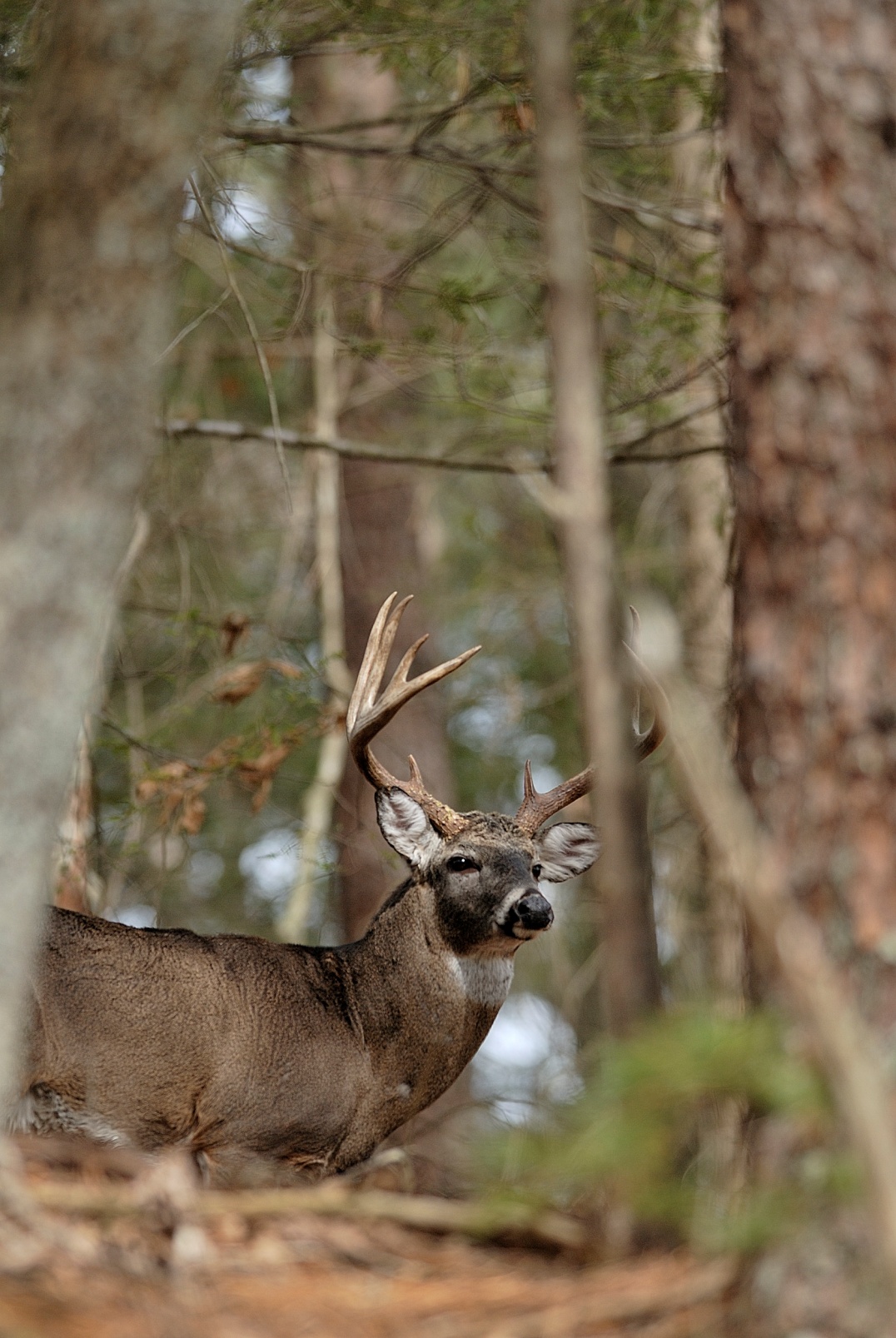
Understanding oaks
While an oak may be quite productive one year, do not expect that to continue in every subsequent year. They are somewhat cyclic; depending on weather, such as a hard freeze in the spring, it can eliminate any nut mast in the fall, or it could be that they simply do not produce many (if any) nuts during a particular year. Another factor to consider is the age of the oak. Typically, oaks produce nuts after they are 3 years old or older and could be as old as 15 to 20 years before nut production begins. However, incredibly old oaks typically produce no nut mast. They put everything into survival.
As mentioned earlier, weather can wreak havoc on any mast-producing tree, including all species of oaks. Regardless of weather, a late freeze or drought will severely impact the nut mast. Sunlight is another issue; oaks that receive ample sunlight will thrive much better than an oak in dense woods. However, I must admit that an oak in dense woods that produces very few acorns can be a magnet while it has nuts. Deer have a sense of security in a dense forest and will prefer that to an exposed area such as a food plot. The key factor to remember is that you must hunt it quickly, while it is still producing.

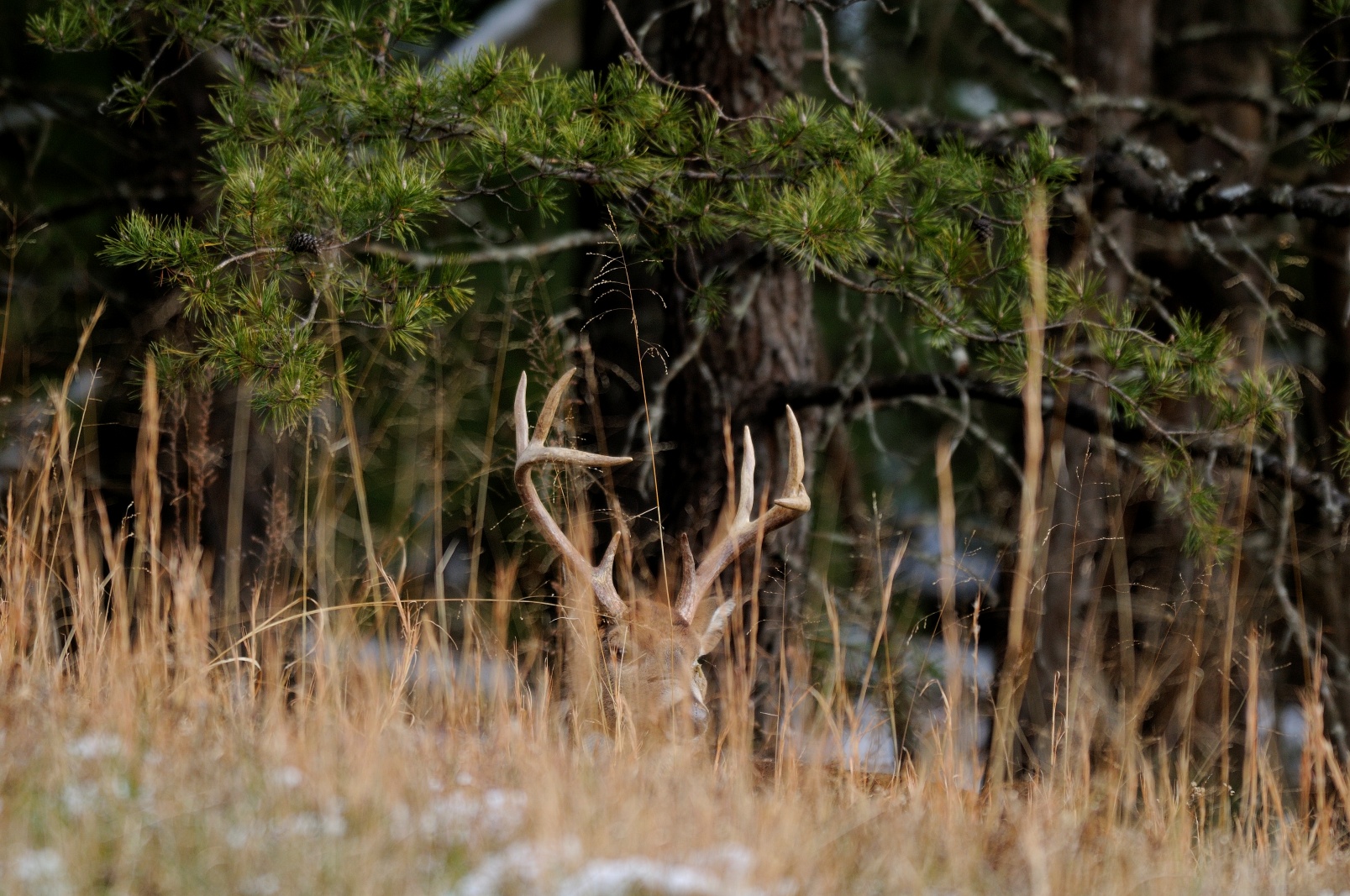
White vs. red oaks
While there are many species of oaks throughout the country, they are generally categorized as white and red. Some years, white oaks produce, while other years, red oaks will. Then there are years when neither produces. White oaks seem to be more dependable than red. If both oaks produce during the same year, the white oak usually drops the sweeter and more desirable acorn prior to the red, but whitetails will still consume the red oak nut.
If both are dropping acorns, knowing which tree is a white oak will be beneficial to you. A white oak has light gray bark and smoother trunk. The leaves are easily identifiable, too. A white oak produces leaves that are smooth and rounded, compared to the pointy, bristly leaves on a red oak.
Are you enjoying this post?
You can be among the first to get the latest info on where to go, what to use and how to use it!
Heavy mast compared to light mast
While an abundance of acorns is great for many species of wildlife, it does not help deer hunters. A light mast puts the deer in a smaller area, making it easier for us to figure out where to put the stand. When nuts are abundant, you may hang your stand in one spot and discover that the deer are in another the day you hunt. I recall my late husband, John Trout, Jr., and I hunting a woods that was loaded with acorns. We would be in two separate locations, and there were times when neither of us would see a deer. You may hear them walking, but not lay eyes on them!
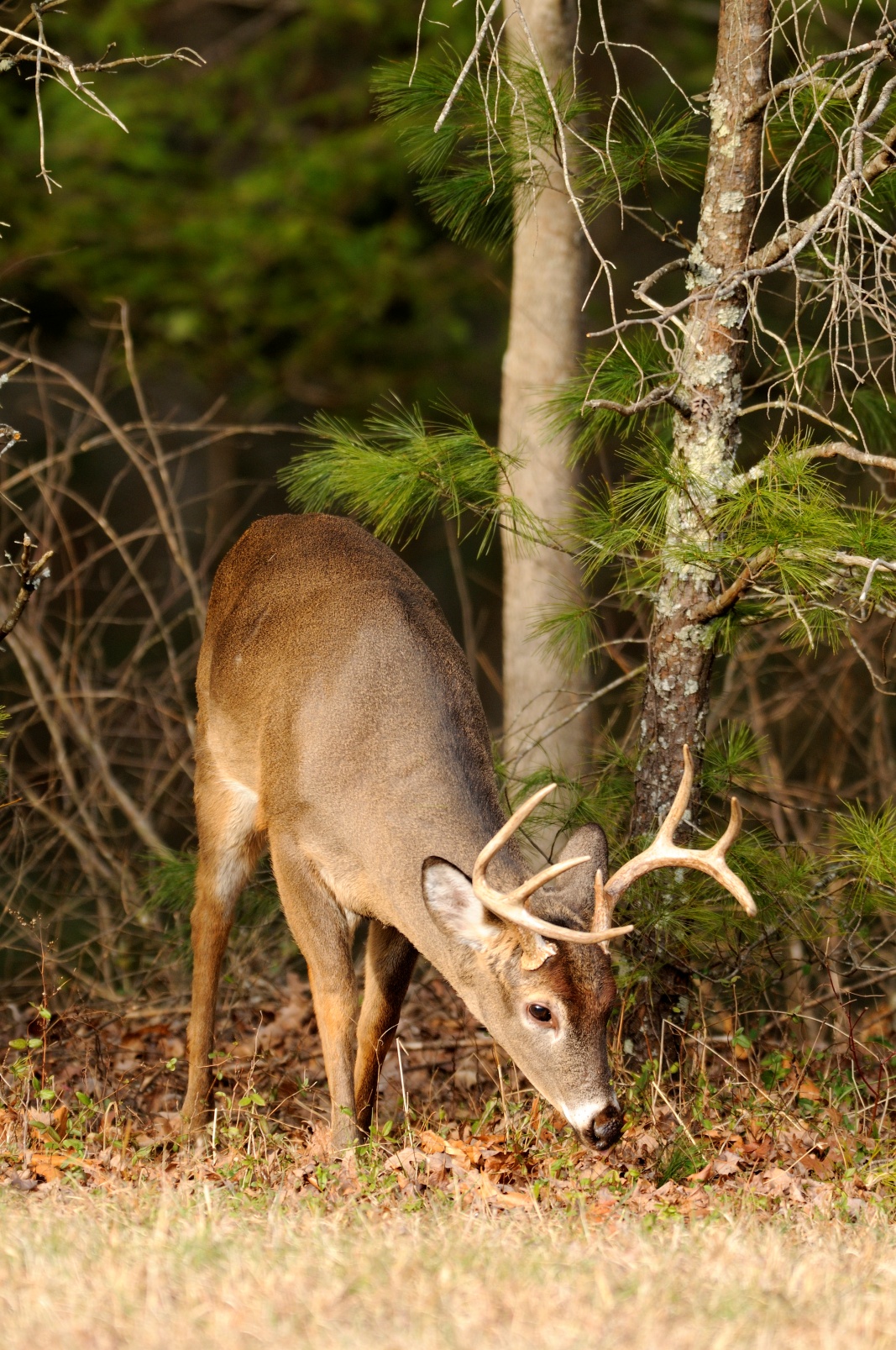
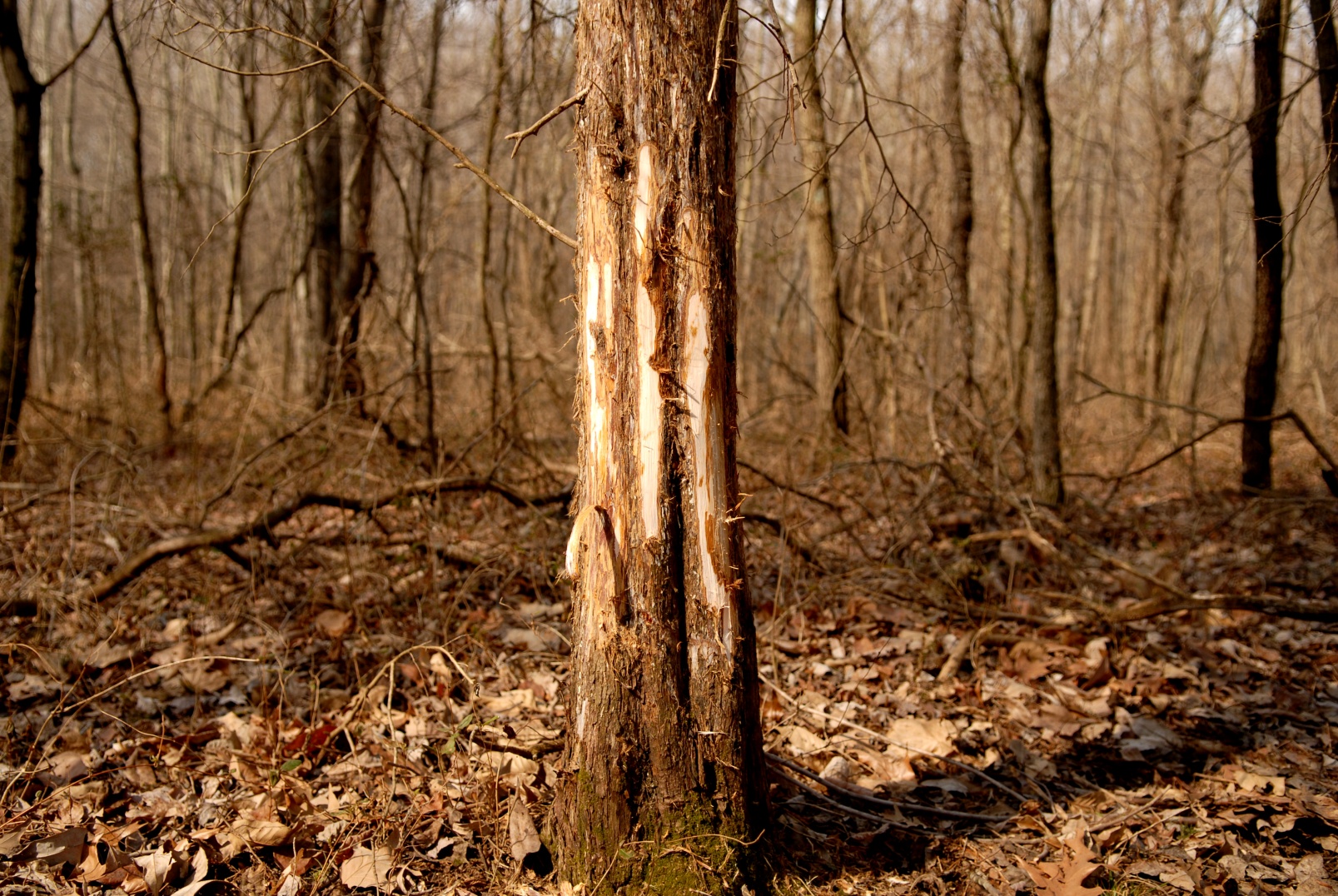
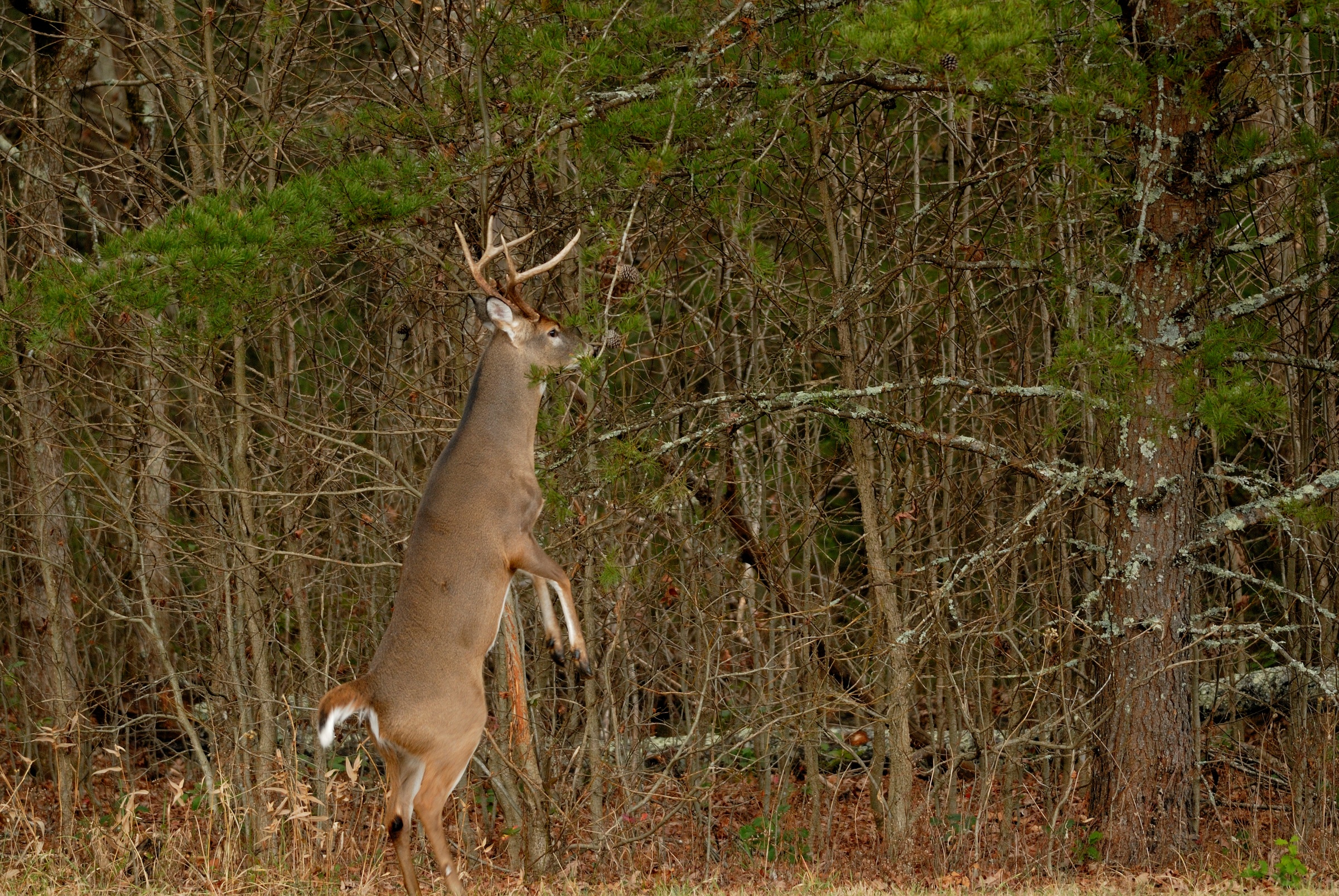
Sign tells all
Scouting is especially important. You must know where a hot oak is before you assume the deer will head to food plots. Even though clover and wheat are inviting to bucks and does, if there is a hot oak dropping nuts, you will miss opportunity unless you head to that location. Finding deer scat and scuffed-up leaves is a good indicator. Also, scrapes and rubs will begin to appear near a hot oak.
Summary
I cannot stress enough how important it is to hunt the oak quickly. Once the nuts vanish, so do the deer. A buck will not stick around hoping for a doe to wander through. He will head for the next available food source where his ladies are hanging out. It is so easy to see deer droppings, messed up leaves, scrapes and rubs by an oak and want to stay there because the sign looks so great, but once those nuts are gone, they are gone. That is the time for you to be gone as well!
MWO
SHARE THIS POST
Did you enjoy this post?
You can be among the first to get the latest info on where to go, what to use and how to use it!
Vikki Trout
Vikki Trout is an award winning full-time freelance writer and photographer. She learned to hunt and write from her late husband John. Trusting in Christ, she supports herself to this day.
